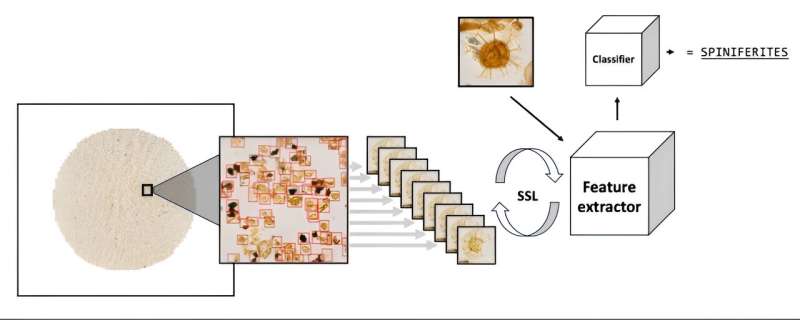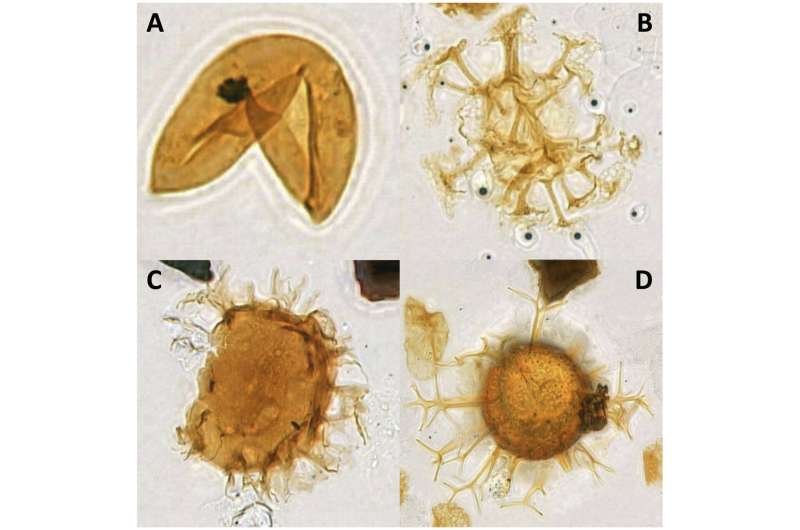This article has been reviewed according to Science X's editorial process and policies. Editors have highlighted the following attributes while ensuring the content's credibility:
fact-checked
proofread
Researchers develop novel AI algorithm for analyzing microfossils

Microfossil analysis allows us to map the subsurface and understand past geological times. In research labs all over the world, geologists spend countless hours looking through the microscope identifying and counting microfossils extracted from sedimentary rock below the seabed.
The analysis is time-consuming but important, as the species distribution tells a great deal about the geological time period of sedimentary layers from the subsurface, as well as the climatic conditions at the Earth's surface at the time when these microfossils were formed.
In a recent study published in the journal Artificial Intelligence in Geosciences, researchers at the machine learning group at University of Tromsø (UiT) The Arctic University of Norway created an advanced method for automatically detecting and analyzing microfossils from microscope images using AI. The team, in collaboration with industry partner Equinor, presented a method for automatic microfossil detection and analysis.
"This work shows that there is great potential in utilizing AI in this field," says researcher Iver Martinsen, first and co-corresponding author of the study. "By using AI to automatically detect and recognize fossils, geologists might have a tool that can help them better utilize the enormous amount of information that wellbore samples provide."

Microfossils are found in vast amounts everywhere, but the time and expertise required to analyze the data means that only a fraction of the available fossils are analyzed. The method the researchers used are based on state-of-the-art AI methodology—training an AI model completely without annotations, utilizing the large pool of raw data provided by the Norwegian Offshore Directorate.
"We used AI to detect fossils from one selected well on the Norwegian continental shelf, and in turn use 100,000 of the detected fossils to train a model for image recognition," says Martinsen.
To evaluate how well the model performs, the researchers tested the model by classifying several hundred labeled fossils from the same well.
"We are very happy with our results. Our model exceeds previous benchmarks available out there. We hope that the present work will be beneficial for geologists both in industry and academia," adds Martinsen.
More information: Iver Martinsen et al, The 3-billion fossil question: How to automate classification of microfossils, Artificial Intelligence in Geosciences (2024). DOI: 10.1016/j.aiig.2024.100080
Provided by KeAi Communications Co.





















